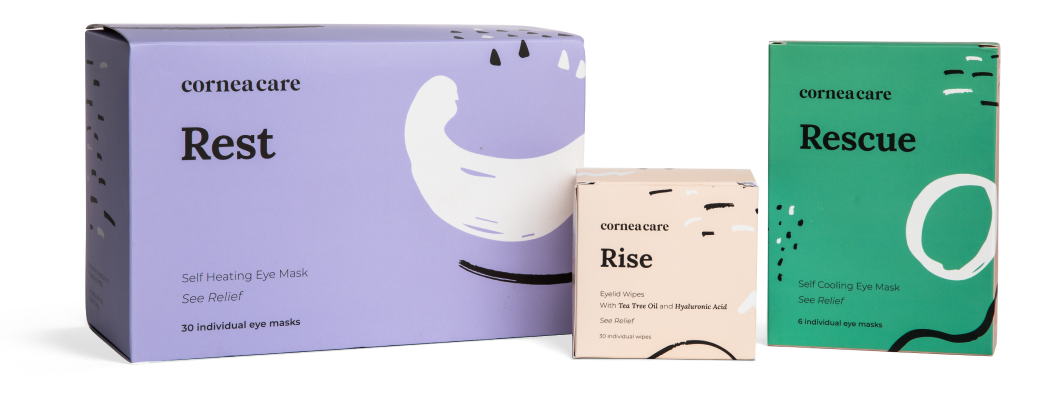Are you thinking about changing your eye color for cosmetic reasons? It might seem like a simple decision with social media flooded with before-and-after photos. But the truth is, permanent eye color-changing procedures can come with serious consequences.
While some options like colored contacts are safe when used correctly, surgeries for changing iris color carry significant risks for vision loss, long-term eye damage, and other complications.1It’s important to understand what really happens when eye color surgery goes wrong, the dangers involved with iris implants and corneal tattooing, and what you need to know before considering surgery to alter your eye color.
Key Points
- Eye color surgery is risky and may lead to permanent vision damage.
- None of the common procedures are FDA-approved for cosmetic purposes or proven safe.1
- Colored contact lenses prescribed by an eye doctor are the safest option for changing eye color.1
What is Eye Color Surgery?
Eye color surgery refers to several procedures intended to permanently change the color of your eyes. Unlike contact lenses, which are removable and low-risk, surgical options alter the iris color through artificial implants or pigment-based techniques. These are sometimes marketed as cosmetic eye color change procedures or eye color correction surgery.
The most common techniques include:
- Iris implant surgery – involves inserting a silicone implant into the eye to cover the natural iris. Originally intended for medical use in patients with iris defects, this procedure is being used for cosmetic purposes.1
- Laser eye color change – uses laser energy to break down pigment in the iris, typically to lighten dark eyes. The risks of this method include vision loss and corneal scarring due to infection.2
- Keratopigmentation or eye tattooing – adds color pigment to the cornea for a visible color change effect. It is considered high-risk and may cause corneal clouding, light sensitivity, infection, and vision loss.1
Clinical trials are still ongoing. Each of these methods is promoted as a cosmetic application, but most are not FDA-approved, lack peer-reviewed long-term safety data, and are often performed in clinics outside the United States with little regulation.3
Why Do People Choose Eye Color Surgery?
Some people seek permanent eye color change for cosmetic reasons. They may want to move away from daily use of colored contact lenses, prefer a different eye color that aligns with their personal identity, or simply like the look of lighter or unusual iris colors. Popular choices include blue, green, and lighter brown. However, the risks are substantial and often underreported.4
There’s also the influence of social media and influencers who share their cosmetic transformations, making the procedure seem more mainstream or lower risk than it actually is. In truth, most of these procedures are still considered experimental and come with long-term risks to your eye health and vision.4

All Rounder
Eyelid Hygiene Plan 3
Perfect for eye dryness, burning, itching, grittiness, crusting/flaking of eyelashes and inflamed/swollen eyelids. Free shipping 📦.
Try today - $60
Eye Color Surgery Gone Wrong: Common Complications
When eye color-change surgeries go wrong, they can cause irreversible damage. Complications include:1,3
- Light sensitivity (photophobia)
- Blurred or double vision
- Chronic eye inflammation (uveitis)
- Decrease of vision or permanent vision loss
- Corneal decompensation or damage
- Iris trauma or pigment dispersion
- Intraoperative complications such as hemorrhaging or iris defects
- Postoperative complications like scarring, endothelial cell loss, and infection
- Emergency glaucoma surgery due to increased intraocular pressure
- Corneal edema and endothelial damage, affecting long-term clarity and eye pressure
These complications aren’t uncommon. Clinical reports and literature reviews show that many of these procedures lead to long-term vision impairment, visual disabilities, or the need for additional corrective surgeries.
What the Studies Say
Research of cosmetic iris implant surgeries and laser-assisted cosmetic keratopigmentation procedures shows that adverse effects are common and often severe. A 2025 study in found that among patients undergoing cosmetic iris implant removal, 60% developed uveitis, 33% required glaucoma surgery, and 20% needed corneal transplants due to irreversible endothelial damage.5
Medium- and long-term cosmetic outcomes are often poor, and patient satisfaction tends to decline as vision issues increase. A 2022 case in BMC Ophthalmology documented corneal decompensation, iris atrophy, and chronic inflammation more than a decade after the original implant surgery — demonstrating that even seemingly stable implants can fail years later.6
Iris implants, such as the Morcher iris-IOL device, were originally developed for reconstructive purposes, not for healthy eyes seeking cosmetic change.3 A 2021 report documented severe glaucoma, corneal failure, and the need for complex surgeries such as keratoprosthesis following cosmetic iris implantation.7

Rise
Eyelid Wipes
Perfect for eye dryness, itching, burning, and crusting/flaking of eyelashes. Free shipping 📦
Try today - $25
What the Experts Recommend
Most eye care professionals strongly advise against any form of cosmetic iris implant, laser eye color change, or corneal tattooing. Keratopigmentation can lead to serious risks such as blindness, glaucoma, and eye inflammation, and experts warn its long-term effects remain unknown.8 When iris implants are used for purely cosmetic eye color change, the risks of endothelial cell density loss, chronic inflammation, pigment dispersion, and implant dislocation are significantly increased.7
These procedures are not FDA-approved and carry significant risks of permanent damage. According to multiple literature reviews and expert consensus statements, cosmetic eye color surgery is not considered medically acceptable except in rare reconstructive cases.1,2,3,6
If you’re considering eye color surgery abroad, keep in mind that many countries offering these procedures have limited medical oversight, and post-operative care is often lacking.3 Any complication that arises may have to be corrected in your home country by specialists unfamiliar with the original technique.
Colored contact lenses prescribed by a licensed professional remain the safest way to change your eye color.1,2 They’re reversible, low-risk, and regulated by the Food and Drug Administration (FDA) in the United States.

Multivitamin
Eye Vitamins & Minerals
A single multivitamin to address the nutritional needs of your eyes, mind and body. 📦 Free shipping.
Try today - $35
Safer Alternatives for Eye Color Change
While surgical techniques may seem like a shortcut to changing your eye color permanently, colored contact lenses remain the safest and most reversible option. They’re widely available in popular colors like hazel, blue, green, gray, and even violet. Prescription-colored contacts can be custom-made and properly fitted by eye doctors (optometrists and ophthalmologists) to avoid irritation, oxygen deprivation, or infection.
If you’re curious about long-term solutions, some eye care providers are researching selective laser iris depigmentation. This non-invasive laser treatment is still experimental and lacks the clinical data needed for widespread use.3
Another developing option is keratopigmentation using femtosecond lasers and a double tunnel technique, which may offer better pigment distribution and fewer complications. But again, these surgical alternatives are still under review in clinical trials and should not be considered safe for cosmetic use until more evidence becomes available.9,10
What Happens If Things Go Wrong?
If you’ve already had a procedure and are experiencing problems, it’s important to see an eye doctor immediately. Common interventions include:
- Removal of the cosmetic implant, often through complex intraocular surgery
- Corneal transplant (penetrating or lamellar keratoplasty) to manage scarring or endothelial failure
- Anti-inflammatory and antibiotic treatment for eye infections or chronic inflammation
- Emergency surgeries to relieve high eye pressure or treat complications like iris atrophy
Even with proper treatment, some patients experience permanent visual changes, irregular iris appearance, sectorial heterochromia, and long-term binocular vision issues. In the worst cases, patients face severe vision loss or lifelong dependence on corrective eyewear and eye drops.3
Your recovery may require multiple surgeries, lifelong follow-up care, and ongoing vision rehabilitation. The cosmetic results are often disappointing when compared to the original expectations from social media marketing.

Rest
Warm Compresses
Perfect for eye dryness, fatigue, tearing, and puffiness of the eyelids. Free shipping 📦.
Try today - $30
Eye Color Surgery Gone Wrong FAQ
There is no proven safe way to permanently change your eye color for cosmetic reasons. Iris implants, laser iris depigmentation, and corneal tattooing involve significant risks for vision loss, eye inflammation, and serious complications. Most eye doctors recommend avoiding these procedures unless they are medically necessary. Colored contact lenses fitted by an eye care professional remain the safest and reversible option.
Keratopigmentation can lead to corneal damage, light sensitivity, chronic inflammation, blurred vision, and loss of vision if not performed correctly. While it’s considered a promising technique in reconstructive settings, cosmetic applications still lack consistent long-term safety data. Risks also include endothelial cell loss, postoperative complications, and pigment fading or migration. The level of evidence suggests caution, especially outside clinical trials or controlled settings.
No, there’s no natural way to change your iris color permanently. Minor shifts in perceived eye color can happen due to lighting, clothing, or pupil dilation, but these aren’t true color changes. No diet, supplement, or habit can alter eye color. Using colored contact lenses from a licensed eyecare provider is the only safe method to change your appearance without surgery or long-term risk.
Putting It All Together
Eye color surgery gone wrong can cause far more than cosmetic regret. It can leave you with irreversible vision loss, chronic pain, and the need for ongoing medical treatment. The risks for vision loss and permanent complications from iris implants, corneal tattooing, and experimental keratopigmentation procedures remain high.
Let your eye color reflect your individuality without putting your sight at risk. Talk with a licensed eye care professional about safer, reversible options like colored contact lenses.
What’s Next
If you wish to learn more about eye color and colored contact lenses, read:



